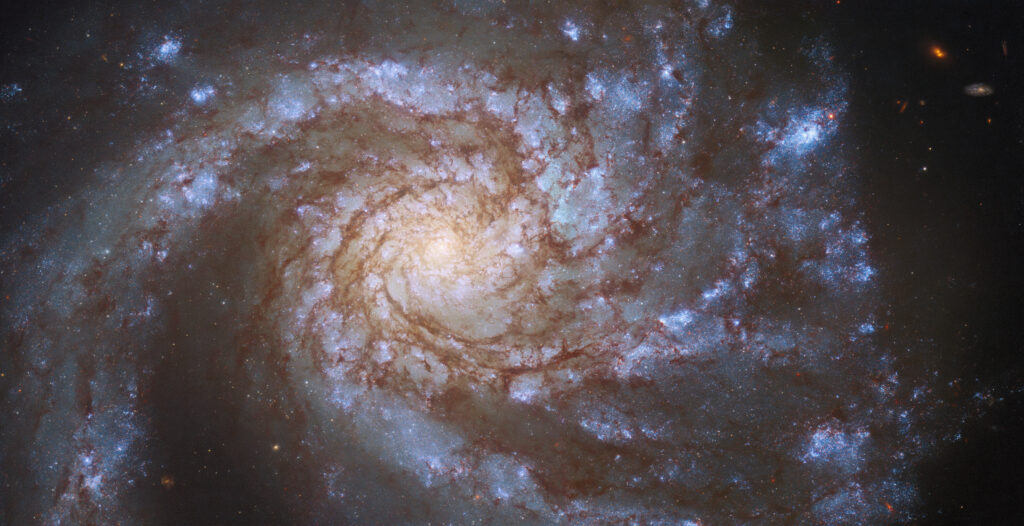The presented image was obtained using the WFC3 camera installed on board the Hubble telescope. It shows the galaxy M99, which is located at a distance of 42 million light years from Earth.

Similar to our Milky Way, M99 has a spiral structure. However, this is not an ordinary spiral galaxy at all. One of the main distinguishing features of M99 is that it is classified as a spiral galaxy with an ordered structure (galaxy of the “grand design” type). Such objects are characterized by the presence of powerful, brightly expressed and well-designed spiral arms that clearly emanate from their center. It is believed that about 10% of all spiral galaxies belong to this type.
The Hubble photo clearly demonstrates why the classification of M99 as a galaxy with a “grand design” is quite justified. Its bright twisted spiral branches stand out clearly against the dark background of the surrounding space, and a variety of mutually consistent structures are easily identified in them.
Interestingly, Hubble “looked closely” at the M99 twice. The first observations were made during a project aimed at finding the “missing link” between the outbursts of nova and supernova. The first part arises as a result of the interaction of white dwarfs and companion stars in binary systems. The second as a result of the collapse of giant luminaries. At the same time, modern astronomical theories predict the existence of sudden outbursts that occupy an intermediate position in brightness between nova and supernova. One of these events was recorded in M99. Astronomers used Hubble to determine its exact location.
The purpose of the second part of observations was to search for relationships between young stars and clouds of cold gas. They were part of a joint project involving Hubble and the ALMA radio telescope complex. In total, they studied 38 nearby galaxies, including M99.
According to https://esahubble.org
Follow us on Twitter to get the most interesting space news in time
https://twitter.com/ust_magazine

